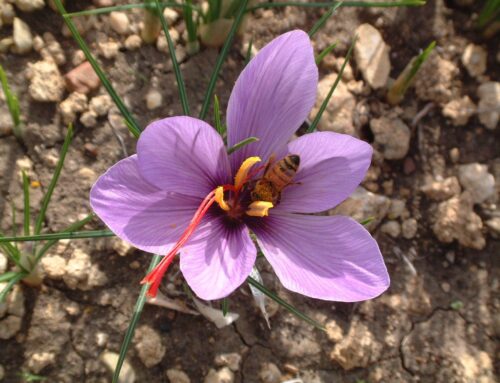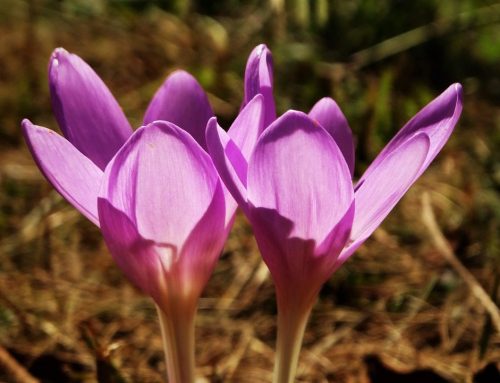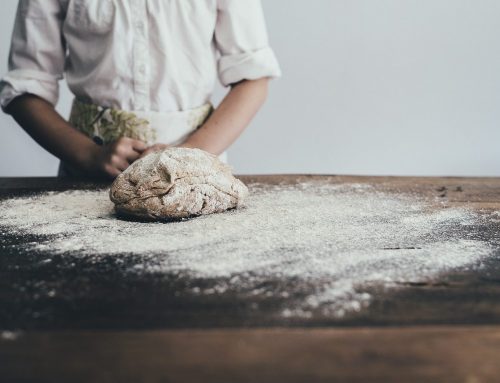Iranian Saffron
Saffron, often known as “red gold,” is a mystical element in Persian culture, used in everything from fragrant meals to beautiful sweets to medical and spiritual healing. The pricey spice has always been in great demand, and it even sparked a war in central Europe in 1374. But first, let’s look at saffron in Iran and discover why it should be on your souvenir buying list.
What is the Origin of Saffron?

Saffron is said to have originated in Greece, but tell it to any Iranian and they will laugh! According to a more credible theory, saffron cultivation began in Iran. The debate over the precious spice’s origins is ongoing, but consider this: Iranians are now the world’s largest saffron producers (90 percent of the world’s saffron is produced in Iran and Iranian saffron is exported to numerous countries.)
Also read: Top 5 saffron producing countries.
Iranian Saffron Harvest Season
The saffron harvest season starts in early November every year. The vivid purple blooms blanket the fields and form a spectacular scene in Iran’s arid areas, where most other flora has died. Iran’s major saffron producers are concentrated in the country’s east. Mashhad, which is often famous for its religious significance, is the place to go if you want to visit the largest market in this field. If you’re more interested in where saffron originates from, keep Gonabad, Torbat Heydariyeh, Taybad, Khaf, and Qaen in mind. All of these cities are in the Khorasan area, and their harvest season starts on November 1st and lasts for two to three weeks.
Saffron harvest starts before dawn when the blooms have not yet opened. Men and women rush to the field to begin plucking flowers as quickly as they can, and the flowers miraculously blossom in the first sunlight. Around 9 a.m., work comes to a halt as the blooms are separated in a shaded area. Everyone gathers around a large bouquet of flowers, carefully removing the three stigmas. Remember how a gram of saffron required 500 stigmas? One gram of saffron requires about 167 blossoms. Saffron is extremely valuable because of this.
Uses of Saffron
In Iranian cuisine, saffron is often used as a unique flavor. The fragrance and color of chicken kebab (joojeh kabab), as well as a thin coating of saffron mixed rice on top of the white mound of rice and barberries, all promise a warm welcome. Iranians value saffron and consume it sparingly, believing that excessive use may damage their mental health. In the summer, they eat it in the delicious saffron ice cream (Bastani Sonnati), and in religious rituals, they serve it in bowls of sweet rice pudding (Sholeh Zard). Some people combine it with rose petals to create a pleasant herbal tea.
Also read: How to use saffron
Traditions

Saffron and its mystical properties are used in a variety of ceremonies and customs. Iranians think that saffron may cure melancholy and sorrow. Because it is linked with happiness, it is used in a variety of sweets and foods during the Persian New Year (Nowruz). During celebrations and triumphs, ancient monarchs would distribute gold money and saffron among the populace. Saffron and ambergris were utilized as perfume, medicine, and incense in their palaces. Saffron was also used to dye silk and other textiles for the royal family’s clothes, as well as to color paper for significant messages or prayers.
Rituals in use today
A custom known as “Ab Do’a” exists in Shahroud, in the province of Semnan (prayer water). Saffron is prepared for making yellow ink at numerous mosques around the city hours before Nowruz. Calligraphers then use the ink to create seven verses of the Quran on a flowery porcelain plate, each beginning with the phrase Salam (greetings). The plate is then immersed in a copper basin filled with water, which removes the yellow hue. This water is brought to the homes in tiny amounts to be placed on the Haft Sin table set or to be drunk by the sick. It is said to have medicinal properties and to bring good fortune to the family in the following year.
What are your plans with the saffron you purchased?
Saffron should be stored in an airtight container in a dark, cold, and dry location. Keep it out of the freezer since the freezing cold will degrade the fragrance. Before using it in cooking, give it a good brew. Saffron is brewed in a variety of methods by Persians. They crush the delicate stigmas in a tiny mortar, then combine them with hot water and keep them warm. Others prepare it as a cold brew. They placed the ground saffron in a shallow basin and covered it with ice. The amazing dark orange hue emerges as the ice melts. You may use some of this saturated fragrant liquid to flavor a poultry or beef meal, or you can use it to dress up some cooked rice, as the Iranians do.
Saffron tea is a must-try
Put two or three stigmas, and a few rose petals, in a small saucepan or big mug of hot, but not boiling, water. Allow for a 10-minute brew time. It’s best served with a drizzle of honey.
Also read: Benefits of saffron tea
Saffron milk is a good option
Grind a few saffron stigmas and one cardamom pod, then add to milk and cook until the color and fragrance reach their peak. It’s great with a little sugar or honey.








